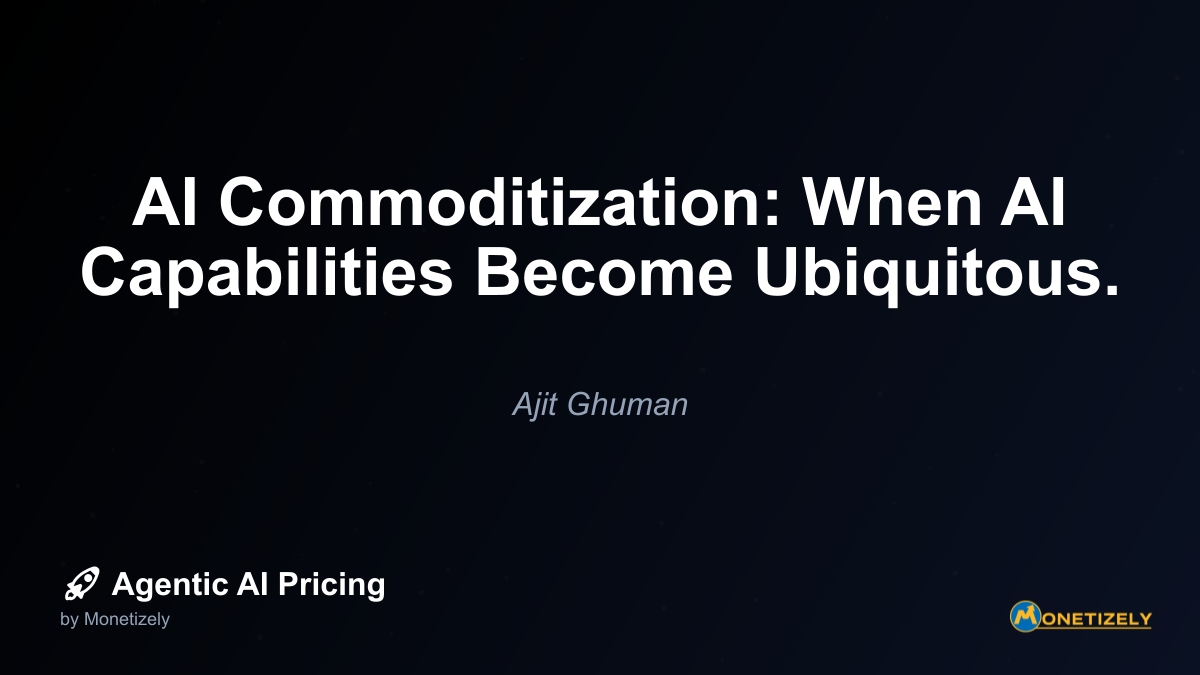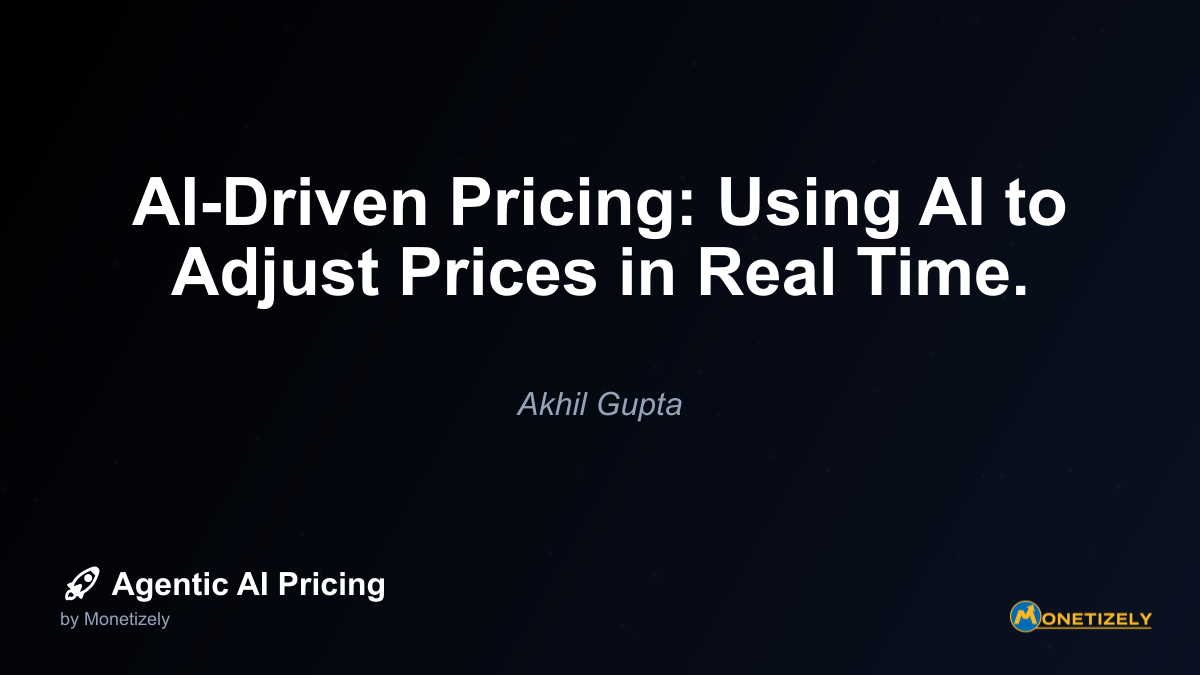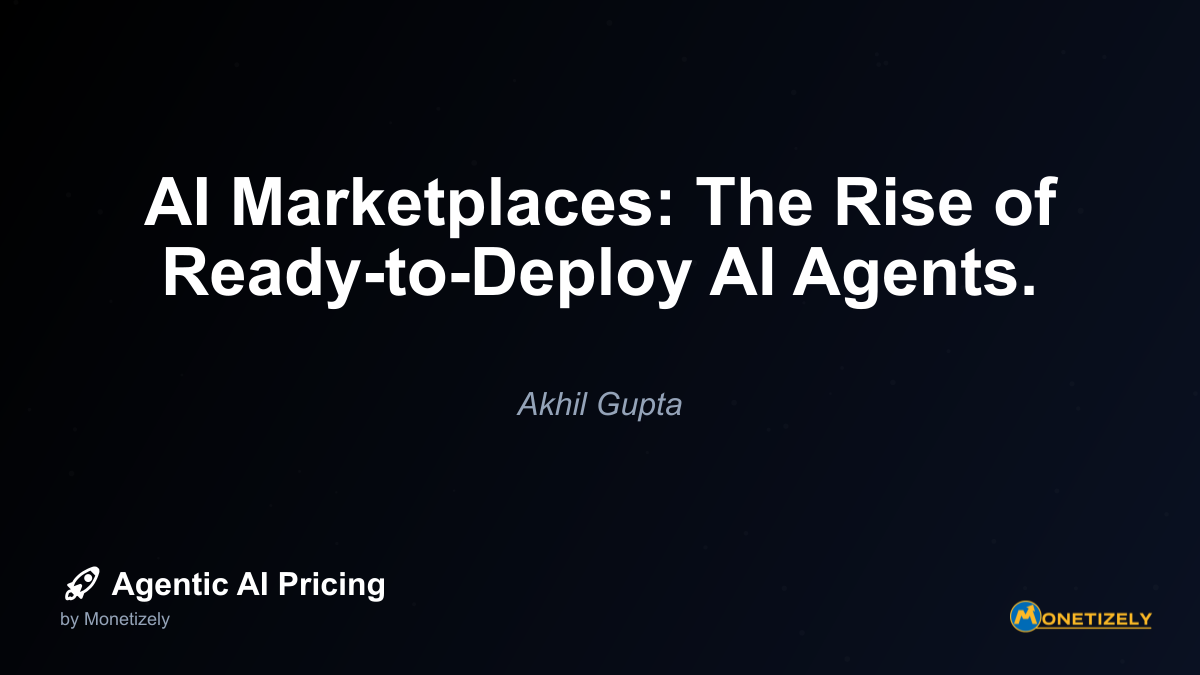· Ajit Ghuman · Emerging Trends · 6 min read
AI Cost Trends: Will Widespread AI Drive Prices Down?
AI and SaaS Pricing Masterclass
Learn the art of strategic pricing directly from industry experts. Our comprehensive course provides frameworks and methodologies for optimizing your pricing strategy in the evolving AI landscape. Earn a professional certification that can be imported directly to your LinkedIn profile.

The Evolution of AI Pricing Models
As AI costs evolve, pricing models are adapting in response. Currently, two dominant approaches prevail in the market:
1. Subscription-Based Models
Fixed monthly or annual fees provide predictable revenue for vendors and predictable costs for customers. This model works well for services with consistent usage patterns but can be inefficient for sporadic or variable AI needs.
Subscription pricing for AI services often includes tiered plans based on features, usage limits, or user counts. As AI costs decrease, we may see more generous allowances within each tier rather than direct price reductions.
2. Usage-Based Models
Pay-as-you-go pricing aligns costs directly with value received. Common metrics include:
- API calls or queries
- Tokens processed (for language models)
- Compute time
- Data volume processed
- Number of AI agents deployed
Usage-based pricing is particularly sensitive to underlying cost structures. As infrastructure and operational costs decrease, competitive pressure will likely drive down per-unit pricing.
3. Hybrid Models
Many AI providers are adopting hybrid approaches that combine subscription components (access to the platform) with usage-based elements (actual consumption). This balances predictability with flexibility.
The Path to AI Commoditization
The term “commoditization” refers to the process by which goods or services become undifferentiated, leading to price-based competition. Several indicators suggest AI is moving in this direction:
1. Standardization of Core Capabilities
Basic AI functions like text generation, image recognition, and sentiment analysis are becoming standardized across providers. When capabilities are perceived as equivalent, price becomes the primary differentiator.
“We’re already seeing commoditization in basic AI tasks,” observes Mark Thompson, technology analyst. “The difference between providers for straightforward text completion or image generation is narrowing, pushing prices downward.”
2. Interchangeability
As AI interfaces become standardized (particularly through common API patterns), switching costs between providers decrease. Lower switching costs intensify price competition.
3. Proliferation of Providers
The number of companies offering AI services continues to grow. Beyond tech giants like Google, Microsoft, and Amazon, specialized AI providers and open-source alternatives are creating a crowded marketplace that naturally exerts downward pressure on prices.
Differentiation Beyond Price
As basic AI capabilities become commoditized, providers will need to differentiate in other ways:
1. Vertical Specialization
Industry-specific AI solutions offer value beyond generic capabilities. Models trained on specialized data for healthcare, legal, financial services, or manufacturing can command premium pricing even as general-purpose AI costs decline.
2. Integration and Ecosystem Value
Embedding AI within broader product ecosystems creates switching barriers and value beyond the core AI functionality. Microsoft’s integration of OpenAI’s technology across its product suite exemplifies this approach.
3. Trust and Reliability
As AI becomes business-critical, factors like uptime guarantees, security protocols, and ethical governance frameworks become key differentiators worth paying premium prices to secure.
4. Advanced Capabilities
While basic AI functions may commoditize, cutting-edge capabilities will continue to command premium prices. Multimodal models, agentic systems, and specialized reasoning abilities represent frontiers where price sensitivity remains lower.
Case Studies: AI Pricing Evolution in Action
OpenAI: Tiered Pricing with Declining Costs
OpenAI’s pricing evolution offers insights into AI cost trends. When GPT-3.5 launched, the company charged $0.002 per 1,000 tokens for input and $0.002 for output. As efficiency improved and competition increased, they reduced prices for GPT-3.5 Turbo by 50% to $0.0010 per 1K input tokens and $0.0020 per 1K output tokens.
Meanwhile, their premium GPT-4 model maintained higher pricing ($0.03 per 1K input tokens, $0.06 per 1K output tokens), illustrating how advanced capabilities continue commanding premium prices while baseline services become more affordable.
Stability AI: From Premium to Freemium
Stability AI initially offered its image generation technology at premium prices. As competition intensified and efficiency improved, they adopted a freemium model with a free tier for basic usage and subscription plans for higher-volume or commercial applications. This transition exemplifies how falling costs enable new pricing approaches that expand market reach.
Cloud Providers: Bundling for Differentiation
Major cloud providers increasingly bundle AI services with their broader offerings. Google Cloud, AWS, and Microsoft Azure provide AI capabilities at competitive rates while creating value through integration with their ecosystems. This strategy helps them maintain margins even as standalone AI service prices decline.
Strategic Implications for Businesses
The evolving AI cost landscape has significant implications for organizations both providing and consuming AI services:
For AI Service Providers
Invest in efficiency: Operational excellence and technical efficiency will become increasingly crucial competitive advantages.
Develop proprietary datasets: As model architectures become commoditized, unique data becomes a key differentiator.
Build vertical solutions: Industry-specific AI offerings can maintain premium pricing even as general-purpose AI costs decline.
Focus on outcomes, not technology: Selling business outcomes rather than AI capabilities helps maintain value-based pricing.
Create ecosystem lock-in: Integration with complementary services increases switching costs and reduces price sensitivity.
For AI Service Consumers
Negotiate flexible contracts: As prices trend downward, avoid long-term fixed pricing arrangements.
Consider multi-provider strategies: Maintaining relationships with multiple AI providers creates leverage and mitigates lock-in risks.
Monitor usage patterns: Understanding consumption patterns helps optimize between subscription and usage-based pricing models.
Build internal expertise: Developing in-house AI capabilities provides leverage in vendor negotiations and creates options as open-source alternatives mature.
Focus on total cost of ownership: Look beyond per-unit pricing to consider integration costs, reliability, security, and governance requirements.
The Future of AI Pricing: Predictions
While precise forecasting remains challenging, several trends appear likely to shape AI pricing over the next 3-5 years:
Tiered commoditization: Basic AI capabilities will experience significant price drops (50-70%) while cutting-edge capabilities maintain premium pricing.
Outcome-based pricing: Models that tie costs to business outcomes rather than usage metrics will gain popularity, especially in enterprise contexts.
Micro-service architectures: AI capabilities will increasingly be priced and sold as specialized micro-services rather than monolithic offerings.
Open source pressure: Open source alternatives will continue exerting downward pressure on proprietary solution pricing.
Regulatory premium: As AI regulation intensifies, compliant solutions that minimize legal and reputational risks will command price premiums.
Conclusion
The AI pricing landscape is evolving rapidly, influenced by technological advances, market competition, and changing business models. While many factors point toward eventual price decreases – particularly for standardized, general-purpose AI capabilities – the path will not be uniform across all segments of the market.
For business leaders, the key takeaway is the need for flexible, adaptive approaches to both providing and consuming AI services. Understanding the underlying cost drivers, recognizing where commoditization is occurring most rapidly, and identifying opportunities for value-based differentiation will be essential for navigating this dynamic environment.
As with previous technological revolutions, from personal computing to cloud services, we can expect AI to follow a general pattern of democratization through declining costs. However, the complexity, regulatory considerations, and strategic importance of AI ensure that pricing will remain a nuanced domain where thoughtful strategy – rather than simple cost-cutting – will determine market winners.
Organizations that develop a sophisticated understanding of AI cost trends will be best positioned to make strategic decisions about when to build, when to buy, and how to price their own AI-enhanced offerings in this rapidly evolving landscape.
Co-Founder & CEO
Ajit is the author of Price To Scale, a top book on SaaS Pricing and is the Founder of Monetizely. Ajit has led and worked in pricing and product marketing at firms like Twilio, Narvar and Medallia. His work has been featured in Forbes and VentureBeat. Ajit regularly consults with software companies from Seed stage to post-IPO on pricing strategy. Ajit is also a highly-rated co-instructor for 'The Art of SaaS Pricing and Monetization' on Maven.
Pricing Strategy Audit
Let our experts analyze your current pricing strategy and identify opportunities for improvement. Our data-driven assessment will help you unlock untapped revenue potential and optimize your AI pricing approach.




